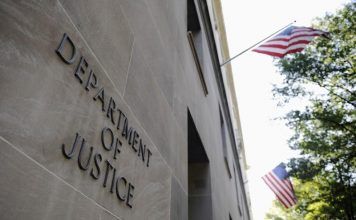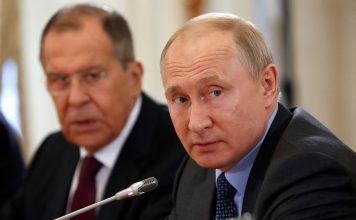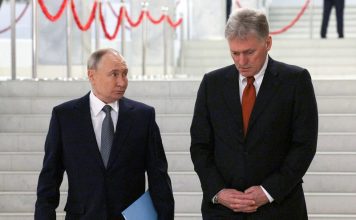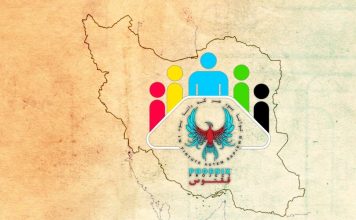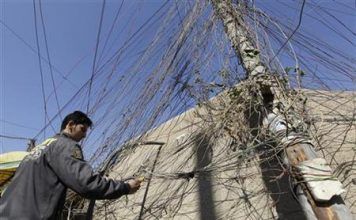By Kayhan Life Staff
Mohsen Pirhadi, deputy chair of Iran’s Seventh Development Plan’s Consolidation Commission, has said that 28 million Iranians live below the poverty line.
The poverty line (poverty threshold) calculates the minimum amount needed to afford essential living expenses by weighing household income against the costs of goods.
Mr. Pirhadi, a Majlis deputy representing the Tehran, Shemiranat, Eslamshahr, and Pardis electoral districts, made the comments at a news conference on July 25.
[aesop_image img=”https://kayhanlife.com/wp-content/uploads/2023/07/2016-01-01T000000Z_63917941_MT1HNSLCS0009EQKFW_RTRMADP_3_HANS-LUCAS.jpg” panorama=”off” credit=”People living outside of the town, Central County, Kerman, Iran. REUTERS./” align=”center” lightbox=”on” captionsrc=”custom” captionposition=”left” revealfx=”off” overlay_revealfx=”off”]
Pirhadi said that the number of people living below the poverty line in Iran had reached 28 million, and warned that the trend would lead to a “serious social crisis.”
“Ignoring the growing social ills will seriously harm society,” the Tehran-based Shargh news agency quoted Pirhadi as saying. “Women will be more susceptible to social problems in the current conditions.”
“The economic downturn of the past few decades has marginalized a greater segment of society, resulting in increased drug addiction, moral corruption, mass migration to large cities, and making women increasingly susceptible to social affliction,” Pirhadi noted.
“We will face a serious social health crisis if we do not address these issues in the Seventh Development Plan,” Pirhadi argued. “Tackling social affliction is part of the government’s broader plan to improve social health within the Seventh Development Plan. Articles 80, 89, and 92 propose measures to control and reduce social affliction.”
Pirhadi noted that while the Seventh Development Plan has prioritized tackling social ills, it has yet to propose additional measures to those included in the previous Sixth Development Plan.
He argued that the Seventh Development Plan must offer a fresh and more comprehensive approach to tackling social affliction.
“The articles dealing with social affliction included in the Seventh Development Plan are not as strong as those listed in the previous Sixth Development Plan,” Pirhadi explained. “The Seventh Development Plan must correct previous mistakes by anticipating possible future social affliction, better understanding social discords, considering demographic factors, and tackling serious problems like drug addiction.”
Pirhadi also warned about the severe impact of social problems on women.
“The Seventh Development Plan does not address the increased danger of social affliction to women,” Pirhadi argued. “It must address the increased use of cigarettes and drugs and growing moral corruption among women. The government has neglected these issues, unfortunately. Women are more susceptible to harm than men.”
[aesop_image img=”https://kayhanlife.com/wp-content/uploads/2023/07/2022-03-10T000000Z_729417369_MT1NURPHO0001MJIY0_RTRMADP_3_HEALTH-CORONAVIRUS-IRAN.jpg” panorama=”off” credit=”A poor man carrying plastic bags while walking past graffiti on a fence near a holy shrine in the holy city of Qom 145Km (90 miles) south of Tehran on March 10, 2022. REUTERS./” align=”center” lightbox=”on” captionsrc=”custom” captionposition=”left” revealfx=”off” overlay_revealfx=”off”]
While the Islamic Republic does not publish an official figure on the number of Iranians living in poverty, evidence shows that an increasing number of households struggle to make ends meet and live below the poverty level.
In comments reported by the Tehran-based Khabar Online news agency on July 23, Ali Rabiei, who served as Minister of Cooperatives, Labor, and Social Welfare from 2013 to 2018, said: “There was a time when poverty was an exception which we tackled, but the problem becomes more fundamental when an official report shows that 30 percent of the population is in the grip of poverty. We need social responsibility more than at any other time in the past.”
“By social responsibility, I mean individuals must understand the impacts of their actions,” Mr. Rabiei explained. “Unfortunately, there are irresponsible people in crucial posts. For instance, 17 unqualified decisions have affected retirement funds, impacting future generations.”
Although the government has not published a definitive report on the poverty level in Iran, data released by several state institutions differs from expert studies.
Some government sources reported that a family of four needed a minimum monthly income of $84 and $140 in 2021 and 2022 to remain above the poverty threshold.
However, economists estimated that a household of four living in Tehran needed at least $600 a month in income in 2022 to remain above the poverty line. The amount for a family of four living in other major Iranian cities, they said, was, on average, $375.
In comments reported by the Tehran-based Etemad online newspaper on June 14, Mohammad Bagheri-Bonabi, a member of the Majlis (Iranian Parliament) Economic Commission, said the poverty threshold in Tehran had reached $562.
According to the Majlis Research Center, the poverty level in the second decade of this century rose by 11 percentage points in Iran. The figure increased from 19.4 percent in 2010 to 30.4 percent in 2020.
A report by the Ministry of Cooperatives, Labor and Social Welfare showed that hyperinflation, economic downturn, and ongoing drop in gross national income (GNI) have continually lowered the living standards of Iranian households in the last decade, forcing 26.5 million people into poverty by 2019.
In comments reported by the Tehran-based Shargh newspaper in May, Hojjatollah Mirzaei, an economist, said: “85 percent of the country’s population live in provinces where the average per capita income [a measure of the amount of income earned per person in a nation] is less than half of Tehran residents.”
“Also, nearly 40 percent of the country’s population live in provinces where long-term unemployment has been at least around 15 percent in the last decade,” Mr. Mirzaei noted. “The unemployment rate in provinces of Lorestan (west), Khuzestan (southwest), and Sistan and Baluchestan (southeast) has been twice the national average for the past two decades.”
Citing recent data, Mirzaei noted that per capita income in Tehran was five times that of Sistan and Baluchestan and between three to four times that in other border provinces.
Mirzaei explained that the unemployment rate in Lorestan, Khuzestan, Sistan and Baluchestan, and Kermanshah (West) is twice the national average. He added that 45 percent and 80 percent of those living in big cities and rural regions of Sistan and Baluchestan lived below the poverty line.
Data shows that families with no working members lived in poverty in the past. However, in the past few years, households with breadwinners have struggled with poverty.
According to recent data, most people could escape poverty by finding employment in the decades before 2010. However, that has not been the case since then, given the economic downturn and hyperinflation.
The economic gap between working-class families with a breadwinner and disadvantaged households with no working members has significantly narrowed since 2017. There was no economic disparity between working-class families with breadwinners and poor households with no working members from 2019 to 2020.
Nearly 60 percent of disadvantaged families and 61 percent of households above the poverty line had breadwinners in 2020. Having an employed head of a family cannot rescue it from poverty in a fast-shrinking economy.
Many people have lost all hope of pulling themselves out of poverty, even those with fully employed members, given that the poverty level has increased steadily since 2010, particularly in the past five years.
In comments reported by the Tehran-based Fardaye Eghtesad news online on July 15, Zahra Kaviani, an economist, said: “Poverty rate and poverty gap have increased since 2017. The poverty rate rose by a small percentage from 2020 to 2021, reaching its highest level ever recorded.”
The poverty rate is the number or percentage of people whose income falls below the poverty line, which can vary by country or region.
The poverty gap determines how far the income of the disadvantaged segment is below the poverty line.
“Poverty rate remained 31 percent in 2018 and 2019,” Ms. Kaviani explained. “However, the poverty gap rose by 2.1 percentage points in 2019 from the previous year, which shows that although the same number of people lived below the poverty line in both years, those in 2019 were much poorer than the ones in 2018.”
“Although the poverty rate dropped by 9.0 percentage points in 2021, the poverty gap rose by 1.0 percentage points in the same year, which shows that the income of the decile group near the poverty line grew more than the income of the decile group below the poverty threshold” Kaviani noted.
Income deciles show the average income for different income groups in society. Deciles describe income distribution, with the poorest households in the first decile and the wealthiest segment in the tenth decile.
“Although households living near the poverty line have experienced an improvement in their livelihood, the living conditions of families below the poverty line have remained unchanged,” Kaviani added.





